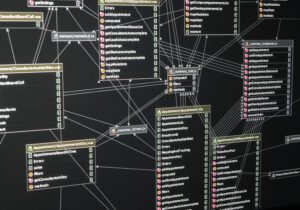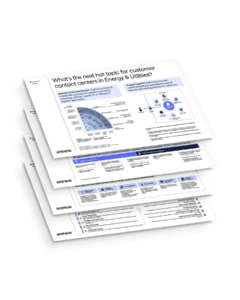What exactly is Scrum and how can teams use it to deliver optimal business value? The Scrum Guide answers these and other questions about the framework. In November 2020, the Scrum Guide was extensively revised. We discuss the most important changes and our view on the related consequences.
Many organizations that have started an agile transformation have adopted Scrum principles. The framework is being used more and more often, outside IT and software development, too. There are good examples of its use by marketing firms, banks and insurers. Although Scrum was always a simple framework, its implementation was challenging. The new Scrum Guide is even less prescriptive and is aimed at working with more focus and commitment. What are the most important revisions?
From Product Vision to Product Goal
The Product Vision, which was so important in the past, has disappeared from the new Scrum Guide. By using the vision as a tool, but focusing on the goal, things become more concrete: a goal is less abstract than a vision. In addition, the authors have added the Product Goal as a commitment for the product backlog. This means that Scrum Teams now have an even greater commitment than before to producing the final product and are therefore more focused on the ultimate goal.
Developers and the Scrum Master can now help the Product Owner in an even more concrete way to select items for the product backlog, for example, by asking probing questions about work that does not appear to be related to the Product Goal. As a Product Owner, you are responsible for the backlog. You can’t take this on alone. You need a team to determine what is important to realize the product. This probably makes your job as a Product Owner easier. Communication with the entire team becomes simpler. The lines become shorter and Product Owners no longer have to define something as abstract as a vision.
There may be a greater risk of creating a point solution while actually working towards a Product Goal, but that doesn’t have to be a bad thing: you re-examine what your Product Goal is in each sprint. That is part of your capacity to learn as a Scrum Team. Perhaps there is a risk that you race down the path to your goal and forget that you have to remain agile. Becoming agile is a learning process, and if all goes well, teams get better and better at it.
The role of the Scrum Master is growing in importance
In the past, it was said that Scrum Masters would become unnecessary for many teams in the long run. The opposite turns out to be true, although what the role entails is changing. Increasingly, Scrum Masters are the lynch pin between the teams and management. They safeguard the philosophy and ensure it is embedded in the organization. The new Scrum Guide talks about accountability and no longer mentions roles. A Scrum Team is made up of professionals who are accountable for the activities of the Scrum Master, Product Owner or Developers. In theory, this means that the same person could be both Scrum Master and Product Owner, although this is not advisable.
A frequently asked question is whether a single Scrum Master can lead multiple teams. It’s possible, as long as the Scrum Master has enough time to do so: there is a shortage of skilled Scrum Masters. Consider assigning a young talent to work alongside an experienced Scrum Master. In this way, you can meet future demand for good Scrum Masters.
There is no Development Team within the Scrum Team
Traditionally, a Scrum Team consisted of a Scrum Master, Product Owner and Development Team. In the new Scrum Guide, the concept of a separate team within a team has been eliminated. The emphasis is emphatically on a single team, consisting of a Scrum Master, Product Owner and Developers. And, “Developers” does not just refer to software development. Everyone who provides customers with solutions, or who delivers a product, develops something. “Developers” is an umbrella term that can also include testers and marketers.
Less and less is prescribed for Developers – and in fact for Scrum Masters and Product Owners, too. Daily scrums are no longer about the details of what you did yesterday and what you will do today. They’re about inspecting progress towards the Sprint Goal, adapting the Sprint Backlog as necessary and adjusting the upcoming planned work. The aim is to come up with an actionable plan for the next day of work. Sometimes, this can be a challenge: many backlogs consist of separate components which makes it difficult to create a Sprint Goal. This means it’s even more about using your own initiative to perform a proper inspection of progress towards the Sprint Goal.
In the new Scrum Guide, the Definition of Done is now a commitment of the increment. This means it serves as a way of ensuring that the quality of each increment delivered is sufficient.
Read more: Scrum Guide 2020




